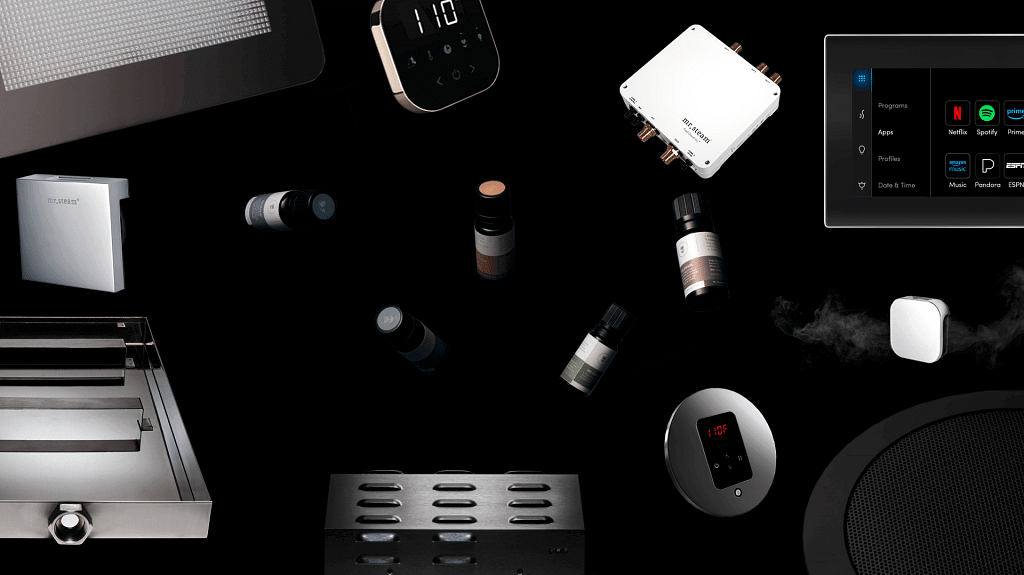Sauna
Sauna Before or After a Workout? We Checked All the Details
Whether it’s using your own sauna at home or while going to the gym the sauna can have a great effect on your workout both before and after. Which one is better?
Should you enter the sauna before or after a workout?
When it comes to incorporating a sauna into your workout routine, a question often arises: should you sweat it out before or after hitting the gym? The truth is, there’s no single, definitive answer. Both pre-workout and post-workout sauna sessions offer unique advantages and disadvantages, and the optimal timing depends on your specific goals. Let’s delve deeper into the potential benefits and drawbacks of each approach:
Pre-Workout Sauna: Warming Up for Peak Performance
There’s a certain allure to using a sauna before your workout. The intense heat can act as a preparatory tool, potentially priming your body for a more productive exercise session. Here’s how:
- Enhanced Blood Flow: The sauna’s warmth dilates your blood vessels, increasing blood flow throughout your body. This delivers more oxygen and nutrients to your muscles, setting the stage for improved performance.
- Improved Flexibility and Range of Motion: The heat helps loosen up your muscles and joints, making them more pliable. This can lead to a wider range of motion and potentially better technique during your workout.
- Mental Preparation: The warmth and relaxation of the sauna can have a calming effect, focusing your mind and preparing you mentally for the physical demands ahead.
However, using a sauna before a workout isn’t without its drawbacks:
- Dehydration Risk: Saunas cause you to sweat profusely, which can lead to dehydration if you’re not careful. Be sure to drink plenty of water before, during, and after your sauna session to stay adequately hydrated.
- Reduced Performance: Spending too much time in the sauna can leave you feeling drained and lightheaded. This can negatively impact your workout intensity and overall performance.
- Not a Replacement for a Proper Warm-Up: While the sauna loosens you up, it shouldn’t replace a dedicated warm-up routine. Dynamic stretches and light cardio are still crucial to prepare your muscles for specific movements and minimize injury risk.
Post-Workout Sauna: Optimizing Recovery and Relaxation
The more common approach is to use the sauna after your workout. There are several compelling reasons why this might be the better choice:
- Muscle Relaxation and Recovery: The heat helps ease muscle tension and soreness built up during your workout. This promotes faster recovery and can get you back in the gym feeling refreshed sooner.
- Improved Circulation: The increased blood flow caused by the sauna helps flush out lactic acid, a byproduct of exercise that can contribute to muscle soreness. This can significantly reduce post-workout discomfort.
- Enhanced Flexibility: Similar to the pre-workout benefit, looser muscles after a sauna session can improve your flexibility, making stretching more effective and allowing for a wider range of motion.
However, there are a few things to keep in mind when using the sauna after a workout:
- Cool Down First: It’s important to allow your body temperature to decrease slightly before entering the sauna. This helps prevent overheating and potential strain on your cardiovascular system.
- Hydration is Key: Replenish the fluids lost through sweat by drinking plenty of water before and after your sauna session. Dehydration can worsen post-workout muscle soreness.
- Listen to Your Body: Don’t push yourself too hard. Start with short sauna sessions (10-15 minutes) and gradually increase the time as tolerated. Be mindful of any dizziness or discomfort and adjust accordingly.
- Shower Afterward: Rinse off sweat after your sauna session to cool down further and prevent clogged pores.
The Takeaway: Choosing Your Sauna Strategy
By understanding the pros and cons of using a sauna before and after a workout, you can make an informed decision that aligns with your goals and preferences.
- If you prioritize improved performance and flexibility during your workout, a short (5-minute) pre-workout sauna session might be beneficial. However, ensure you stay well-hydrated and follow it up with a proper warm-up routine.
- For optimized recovery, reduced muscle soreness, and enhanced post-workout flexibility, using the sauna after your workout is generally recommended. Remember to cool down first, stay hydrated, and listen to your body’s signals.
Ultimately, the best approach is to experiment and see what works best for you. Embrace the sauna as a valuable tool to enhance your overall workout experience, whether it’s for pre-workout preparation or post-workout recovery.
Sauna Use
Before Workout
Advantages
- Increased blood flow for better performance
- Improved flexibility and range of motion
- Mentally prepares you for exercise
Disadvantages
- Dehydration risk
- Reduced performance if used excessively
- Not a replacement for a proper warm-up
After Workout
-
Enhanced muscle relaxation and recovery
-
Improved circulation to remove lactic acid
-
Increased flexibility for better stretching
-
Requires cool-down before entering
-
Important to stay hydrated
-
Listen to your body; start with short sessions
What are the workout health benefits you can get from a sauna?
The sauna, a haven of hot air and relaxation, offers a surprising range of benefits when incorporated into your workout routine. Beyond the feeling of pure indulgence, research suggests that regular sauna use can enhance your workout experience in several ways, impacting your metabolism, blood circulation, cardiovascular endurance, and even your mental state. Let’s explore the science-backed health benefits a sauna can provide:
- Boosted Metabolism: Studies like this one published in the International Journal of Sports Medicine suggest that sauna use can temporarily increase your metabolic rate. The body’s response to the heat causes an uptick in heart rate and blood flow, burning more calories in an effort to cool down.
- Improved Blood Circulation: The intense heat of a sauna dilates blood vessels, leading to increased blood flow throughout the body. This enhanced circulation, as discussed in research published in the European Journal of Applied Physiology, can deliver more oxygen and nutrients to your muscles, potentially improving performance and recovery.
- Enhanced Cardiovascular Endurance: Regular sauna use may contribute to improved cardiovascular health. A study published in the American Journal of Cardiology found that frequent sauna bathing was associated with a lower risk of heart disease and stroke. The increased heart rate experienced during sauna sessions can act as a form of low-intensity cardiovascular training over time.
- Sharpened Mental Readiness: The warmth and relaxation of a sauna can have a calming effect on the mind, according to research published in the journal Physiology & Behavior. This can help reduce stress and anxiety, potentially leading to improved focus and mental clarity before a workout.
- Temperature Regulation Enhancement: Regular sauna use may help your body adapt to temperature fluctuations more efficiently. A study published in the journal Temperature suggests that repeated exposure to heat stress can improve the body’s thermoregulatory response, potentially aiding in maintaining a healthy core temperature during exercise.
- Uncertain Impact on Respiratory Function: While some studies suggest potential benefits for lung function, more research is needed to conclusively determine the impact of sauna use on respiratory health.
- Muscle Relaxation and Reduced Soreness: One of the most well-known benefits of sauna use is muscle relaxation. The heat helps loosen tight muscles and soothe post-workout soreness. This can be attributed to increased blood flow and the release of endorphins, the body’s natural pain relievers.
Important Note: It’s important to consult with your doctor before using a sauna, especially if you have any underlying health conditions. Additionally, proper hydration is crucial before, during, and after sauna use to avoid dehydration.
By incorporating sauna use strategically into your workout routine, you can unlock a multitude of potential health benefits. Whether you choose to utilize it for pre-workout preparation or post-workout recovery, the sauna can be a valuable tool to elevate your fitness journey.
How to use the sauna to make the most out of your workout?
The sauna, with its toasty embrace, can be a powerful tool to enhance your workout. But how do you use it for maximum benefit? Here’s a breakdown of key strategies to get the most out of your sauna experience, both before and after your workout:
Pre-Workout Sauna Strategies:
- Short and Sweet: If you opt for a pre-workout sauna session, keep it brief. Aim for 5-10 minutes to avoid dehydration and overheating.
- Hydration is Key: Drink plenty of water before entering the sauna to compensate for fluids lost through sweat.
- Listen to Your Body: Pay attention to how you feel. If you experience dizziness or lightheadedness, exit the sauna immediately and cool down.
- Not a Warm-Up Replacement: While the sauna loosens you up, it shouldn’t replace a dedicated warm-up routine. Dynamic stretches and light cardio are still essential to prepare your muscles for exercise.
Post-Workout Sauna Strategies:
- Cool Down First: Allow your body temperature to decrease slightly after your workout before entering the sauna. This helps prevent cardiovascular strain.
- Hydrate, Replenish, Repeat: Replenish fluids lost through sweat by drinking plenty of water before and after your sauna session. Dehydration can worsen post-workout muscle soreness.
- Listen to Your Body: Start with short sauna sessions (10-15 minutes) and gradually increase the duration as tolerated. Don’t push yourself too hard, and be mindful of any discomfort.
- Shower Afterward: Rinse off sweat after your sauna session to cool down further and prevent clogged pores.
Maximizing Benefits:
- Frequency: For optimal results, consider incorporating sauna use 2-3 times a week, strategically placed around your workouts.
- Post-Workout Focus: While both pre-workout and post-workout benefits exist, using the sauna after exercise is generally recommended for enhanced recovery and muscle relaxation.
- Listen to Your Needs: Tailor your sauna experience to your individual needs and preferences. If you have any pre-existing health conditions, consult with your doctor before using a sauna.
By following these tips and understanding the different strategies, you can use the sauna to elevate your workout routine. Whether you prioritize pre-workout preparation or post-workout recovery, the sauna can become a valuable tool to optimize your fitness journey. Remember, consistency and proper sauna etiquette are key to unlocking the full range of benefits this ancient practice offers.
Precautions Needed for Saunas and Workouts
The sauna, with its therapeutic heat, can be a fantastic addition to your workout routine. However, like any powerful tool, it’s crucial to prioritize safety. Here are some essential precautions to keep in mind:
Hydration is Key:
- Before and After: Dehydration is a major risk associated with sauna use. Ensure you drink plenty of water before entering the sauna, both pre-workout and post-workout. Aim for at least 16 ounces of water beforehand and continue to replenish fluids afterward.
- Electrolytes for Extended Sessions: If you plan on using the sauna for longer durations (over 15 minutes), consider incorporating electrolyte-rich beverages alongside water. Electrolytes, like sodium and potassium, help maintain proper fluid balance and can prevent electrolyte depletion during sweating.
Listen to Your Body
- Weakness and Lightheadedness: These are signs your body is overheating. If you experience them, exit the sauna immediately and cool down in a well-ventilated area. Drink plenty of fluids and rest until you feel better.
- Underlying Conditions: Consult your doctor before using a sauna if you have any pre-existing health conditions, such as heart disease, high blood pressure, or epilepsy. They can advise you on whether a sauna is safe for you.
- Gradual Approach: If you’re new to saunas, start with short sessions (5-10 minutes) and gradually increase the duration as tolerated. Don’t push yourself beyond your comfort level.
Additional Safety Tips
- Avoid Alcohol and Drugs: These substances can further impair your judgment and increase the risk of overheating or dehydration.
- Take Breaks: Don’t stay in the sauna for extended periods, especially if you’re new to it. Take breaks in a cool-down area to regulate your body temperature.
- Shower Afterward: A cool shower after your sauna session helps further regulate your body temperature and prevents clogged pores.
- Listen to the Experts: Sauna facilities often have posted guidelines and recommendations. Familiarize yourself with the rules and safety precautions before entering.
Remember: Safety should always be your top priority when using a sauna. By following these precautions and staying mindful of your body’s signals, you can ensure a safe and enjoyable sauna experience that complements your workout routine.










